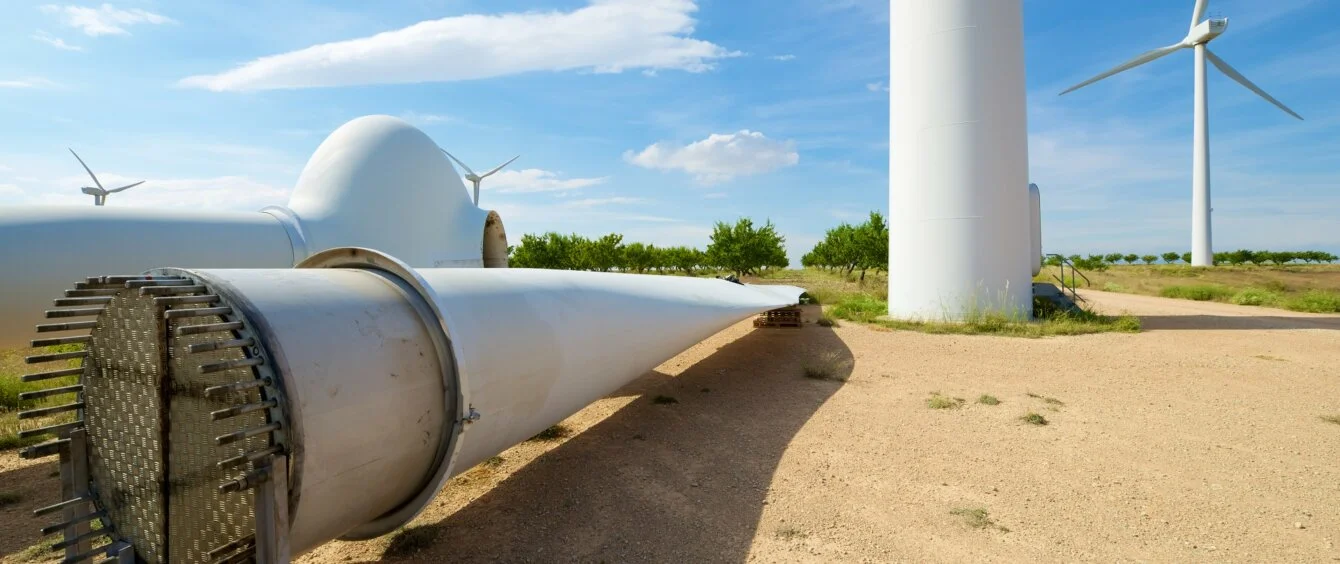Today’s recycling rate of a wind turbine already stands at 80 to 90 percent. Composites reinforced, e.g. with glass fibre or carbon fibre, are considered the most challenging candidates. According to a bulletin on dismantling and recycling wind turbines released by the German Wind Energy Association (BWE) the sector is working on this.
What is a wind turbine actually made of?
Concrete used to build foundations and towers makes up 60 to 65 percent of today’s wind turbines. Older and smaller turbines with steel towers only have up to 20 to 25 percent concrete, with steel accounting for the single-largest share of material of 30 to 35 percent. In addition to the tower, the hub, rotor shaft, gearing mechanism and generator are mostly made of steel.
Other metals such as the copper used in wires, the aluminium used in the nacelle shroud as well as the gold and platinum in the electrical components account for a small share of the total weight, but, as stated in the BWE report, “are important in the recycling process as they are extremely valuable commodities.”
Added to this are smaller amounts of PVC primarily from cable casings as well as mechanical fluids such as lubricant oils and grease. Rotor blades, which are fairly difficult to recycle, only account for about two to three percent of a wind turbine’s weight.
What materials are easy to recycle?
Sometimes, wind turbines scrapped in Germany and other European nations are sold to third countries where they are put back into service. This happens above all when repowering, i.e. replacing legacy assets with modern ones.
If this is not possible, 80 to 90 percent of a wind turbine’s total weight can be recycled using common methods. For instance, concrete is crushed on site into chips or rubble used to build paths or foundations or processed into recycled concrete.
In Germany, it has long been routine to recycle steel and other iron metals, which cover a major part of commodity supply. According to BWE, copper’s recycling quota has also risen above 45 percent. To date, it remains difficult to craft pure aluminium alloys resulting in valuable recycled products. But the incentive is great, as manufacturing primary aluminium requires about ten times as much energy as it does to produce recycled aluminium. This explains why processes have been improved in recent years.
PVC can only be recycled if it is cleanly separated from other plastics. Otherwise, it is lumped together with them and used to generate electricity in thermal power plants.
Integrating composites in the circular economy
As before, the challenges lie in recycling the composite materials from which the rotor blades are manufactured. However, significant progress has been made in this area in the last few years as well.
Bremen-based neocomp has developed a method of integrating roughly 50 percent of glass fibre-reinforced plastics (GFRP) into the material cycle. Once crushed to granules, GFRP can be fired in power stations. This involves subjecting the hydrocarbons in the resins that bond the glass fibres to one another to a heat treatment step. What remains is glass ash which can replace raw sand, an increasingly scarce commodity in the cement industry.
Research is also being conducted on methods such as pyrolysis, which involve alternative ways of integrating GFRP into the circular economy. As early as 2013, a team of scientists demonstrated that some 70 percent of all glass fibres could be recovered and reused taking this approach. Similar processes can be applied to fibres made of carbon fibre-reinforced plastics (CFRP).
Uniform standards to promote economic feasibility
For a long time, extensive recycling of GFRP and CFRP waste was not considered to be economically viable due to the fairly small amounts of these materials in circulation and their heterogeneous composition. As use of these materials increased – for instance in the automotive, shipping and aviation industries – so did waste levels along with the economic and business incentives of recycling it. This holds all the more true in countries with limited primary resources the likes of Germany and other European nations.
Nevertheless, BWE calls for more research and investment. The association believes that to increase financial appeal, it would make sense to introduce European standards governing the dismantling, recycling and export of used rotor blades. BWE finds that these norms should obligate manufacturers to document the design specific to their blades in structured datasheets in order to facilitate recycling and upcycling processes.
